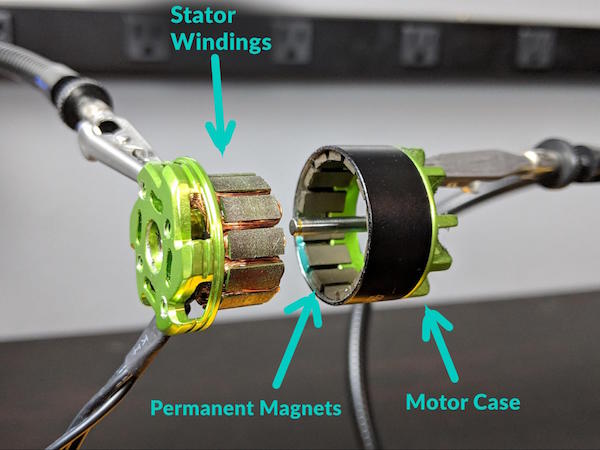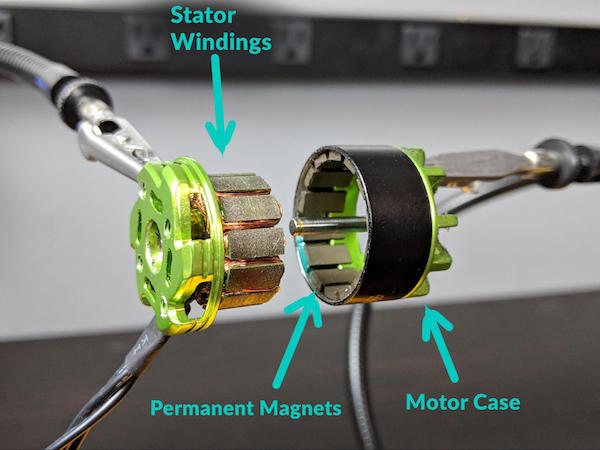Learn the ins and outs of brushless motors and the pros and cons of choosing this type of motor for your project.
If you're working on a project that has a moving part, you'll probably be looking for a motor to make that movement possible. In this series, we explore the most popular types of motors that makers utilize. First, we covered brushed DC motors. Now, let's take a look at its close counterpart: the brushless DC motor.
To read up on the types of projects that brushless motors work best in, check out the round-up:
What Type of Motor is Best for My Project?
Brushless DC Motor Overview
Brushless motors are a newer motor technology, rapidly being adopted in high-end appliances and electric vehicles (like the Tesla Model S) as a replacement for brushed DC motors. They are also extremely common in hobby aircraft, including multirotors. Because brushless DC motors do not have brushes (obviously) they function without many of the limitations of brushed DC motors.
Brushless DC motors are commonly used in multirotor aircraft because of their high speed and efficiency.
How do They Work?
Brushless DC motors are commonly used in multirotor aircraft because of their high speed and efficiency.
Like brushed DC motors, brushless motors work by alternating the polarity of the windings on the interior of the motor. The magnetic fields created when the coils are generated exert a push/pull force on the permanent magnets arranged around the outside of the casing.
On a brushless DC motor, it is not the motor shaft that rotates, but rather the outside case. Because the central shaft, to which the windings are attached, is stationary, power can be delivered directly to the windings, eliminating the need for brushes.
Without brushes, brushless motors wear much less quickly than brushed DC motors, they operate with far less audible and electrical noise, and they are capable of much higher speeds.
Brushless DC motors are just recently starting to be incorporated into more consumer goods and Maker projects because they are challenging to control.
While brushed DC motors simply use the rotation of the motor itself to reverse the polarity of the coils, brushless DC motors are actively controlled and they require a complicated pattern of winding control that must also be scaled as the speed increases.
It was only as microcontrollers became cheaper and more accessible that it was possible for inexpensive systems to keep the correct cadence required to make the motor run.
Brushless DC Motor Pros
Low Wear
The only physical interface between the rotating outside of the motor case and the stationary windings on the interior are ball bearings, meaning that brushless DC motors wear very slowly.
High Speed
Brushless motors have much less friction than brushed DC motors so they can operate at much higher speeds.
High Efficiency
Compared with other types of motors, brushless motors have a very efficient operation, meaning lower power consumption at the same power output compared with brushed DC motors.
Brushless DC Motor Cons
Very Complicated to Control
Brushless DC motors require specialized controllers and complicated control algorithms to operate correctly.
Expensive
The cost of the motors themselves is not overly high, but when the cost of the controller is added as well, the overall cost of including a brushless DC motor into a project is relatively high.
Requires Specialized Gearing
In applications like Dyson vacuum cleaners, the brushless DC motors must be geared down to convert the high RPM into a usable speed.






